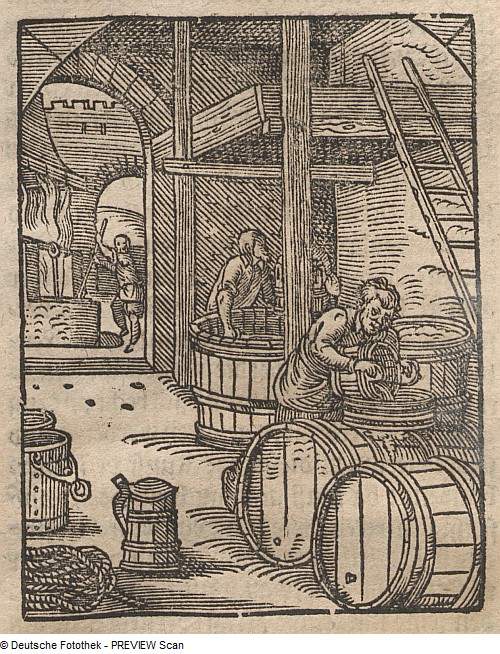
Historical Gose Recipes Part 2
The next recipe I found earlier but it references the first recipe before. It was published in the Book: “Die Naturgeschichte und Bergwerksverfassung des Ober-Harzes” from Johann Friedrich Zückert written in 1762.
Übersetzung Rezept
White beer is brewed on other places and these are called Gose. These should be called wrong Gose because they are not brewed with the Gose water and are not able to come near the Gose from Goslar in taste and quality. The real gose, that is better then those false gose, is unknown to most people since it is hard to transport. I dont want to overpraise this admirable wheat beer. It deserves however that I describe it’s character and the way it is prepared.
The preperation I learned from my time in Goslar and the character and effects I learned from doctors and with my own experience. You can compare my description with those given by Brückman. This beer is prepared from the water of the river Gose. This is where the name comes from. At the start of the brewing four pans will be filled with hot water. On each pan some milled malt will be scattered. From these four two pans will be given in to the mash tun (Mast Butte) and will be mixed thorroughly with 2/3 of the malt. While these are getting hot round wooden logs (called barlen) will be layed out on the bottom of the lauter tun (Sey-Butte). Over these logs a layer of long rye straw is layed out. Now the mash will be transfered to the lauter tun. The remaining two pans will be transfered to the mash tun and mixed thoroughly. Now the wort will be filtered through basket sieves from the mash tun into a pan. After the pan is full hops are added, mixed and everything is boiled for two hours. After that it is filtered through sieves and led through pipes into the cellar. This is called Hopfkrug
After this pan is now free it is again filled from the mash tun and is cooked two hours. This is called the Allerley Krug.
While all this happened the grain in the lauter tun has settled. The peg in it will be opened a bit and the clear wort runs now into a sandstone vessel. Filtering is done by the straw and the logs. The sandstone vessel is unter the hole from the peg dug into the ground. From this sandstone vessel the wort is transfered into the pan and will be boiled for two hours. After that it is transfered thorugh sieves into the cellar this is the Beste Krug which is kept in open containers.
The rest that is left in the lauter tun, mostly fatty mud from the malt, will be lautered and put in a pan. Since this is not enough to fill the whole pan the rest is filled up with the remainders from the Allerlei Krug in the mash tun. This will be cooked for two hours and is the Vierpfannenbier or Yeirke, which is also transfered to the cellar.
Again two pans will be filled with water, heated and some malt will be thrown in. When the water is hot it will be distributed to the mash tun and lauter tun and thoroughly mixed. Then the mash will be transfered from the mash tun into the lauter tun and lautered into the Werth-Stein (sandstone vessel under the lauter tun) and transfered into the pan. It will be cooked for one hour, transfered into the cellar, put into special vessels and is called der Letzte Werth.
At the ent only cold water is put into the lauter tun, then mixed through, lautered and cooked. This is called the Hüppie and partly let into the cellar and partly sold in the brew house. The hüppie that is cellared will be put into barrels and is named Saß oder Satt hüppie. The last pan of the brew is called Cofent. All now know kinds of Gose except the confent will be blended in certain proportions. The ratio depends on how strong the beer should be. It is then filled in barrels and left to ferment which hapens after 12 to 24 hours. This beer needs no foreign additive but innoculates itself.
Special information here is that the water was quite important to it and if you would brew the same beer somewhere else it would not be the same. Another thing is that it mentions that the best qualities are alway boiled for two hours. These are some pretty good informations. I think when combining all the recipes some nice details will come out.
2 thoughts on “Historical Gose Recipes Part 2”
HI I am writing the Brewers Association Style guide line book on Gose – Please could you write to me I would like to ask you a few questions. I would very much appreciate it
Thank you – Fal Allen, fallen@avbc.com